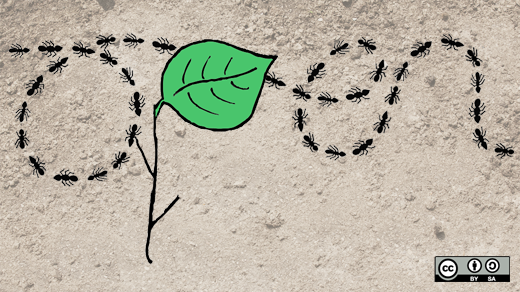SMART stands for Spatial Monitoring and Reporting Tool. It's an open source solution for wildlife managers working in areas of limited and constrained resources. This software helps them collect, measure, and evaluate data overlayed on a structure of best practices, to increase the mission of the conservation community: to protect and improve the lives of endangered species around the world, maintaining biodiversity.
From the SMART website:
SMART isn’t owned by any one individual or organization: its free and available to the whole conservation community.
Jonathan Palmer is one of the founding members of SMART and kindly answered some of my questions. As the SMART Software Development Manager and Director Global ICT at the Wildlife Conservation Society, he provided insight into how this tool is assisting wildlife managers with the critical job of enforcing laws and patroling areas where poachers lurk.
Why did you choose open source to meet your needs and deliver solutions to help protect endangered animals?
The arguments for (and against) open source software are well rehearsed elsewhere.
Our decision really focused on two key criteria that were critical for developing a solution for a global conservation focused need such as SMART:
- How could we best secure a high quality product.
- What approach was attractive to donors and that was most likely to work for all future funding scenarios.
There have been a number of attempts, some more successful than others, at creating software for managing protected areas and for Law Enforcement Monitoring. However, they have all been beset by significant quality issues. The issue of quality is in fact more pressing for the conservation community than many others - many of the wonderful and remote places we work to conserve, by nature, are challenged in terms of a range of infrastructure and capacity issues.
In an environment where you can’t assume technology skills, where there are power and connectivity issues, and where resources are extremely stretched, you just cannot deploy software that requires users to adopt complex workarounds. Open source helps us deliver on quality on a number of fronts—the developers know the code is open and so have increased accountability, upgrades, and interoperability can be addressed on our own timetable and of course, anyone has the opportunity to suggest an improvement to the code.
The second criteria was ensuring our approach was attractive to donors and that we could keep the software alive through peaks and troughs in funding. Donors typically look to open source solutions for developing custom software based on the traditional set of arguments that support investing in open source software—cash costs and the ability to leverage the work of others, freedom, flexibility, and transparency. At the same time, an open source approach gives us a greater likelihood of being able to weather the storm of a trough in funding.
Was proprietary software discussed?
We certainly explored proprietary software.
None of the SMART partners have deep bench strength in software development and if there was an off the shelf solution that met our needs at a lower cost, we might have taken it. We didn’t discount proprietary software based on any specific limitations—it was more a balanced and pragmatic decision about securing the best approach for delivering and maintaining software for our community.
When thinking about the aspects of proprietary software that would be valuable to us, we need to remind ourselves of the scale of our user base. Many of the benefits that come to mind when thinking about the best examples of proprietary software initially actually relate less to the software development approach and more to the scale of the user base. For example, often proprietary software is backed by a private company that invests significantly in the long term development of a product. It would be optimistic to think that SMART will be deployed in 5,000 locations over the next ten years and in most locations, by agencies with extremely limited resources.
While SMART has the potential to enable the open source community to having a lasting impact in conserving wildlife around the planet, it is unlikely that venture capitalists will be looking to make their next billion from SMART.
Of course, there are times where at micro-level the software development effort is most costly because of the need to get code written. But, it isn’t really that meaningful to look at the costs of individual tasks in isolation. Overall, we must deliver a high quality and ever improving product, on a tight schedule based on limited resources for a fairly small user base (in a way that can be sustained in a variety of future funding scenarios).
How do you maintain the SMART desktop application?
We use Assembla as the platform for hosting our code repository and supporting tools such as the issue tracker. Drupal is used for our website.
We are still in the early days of developing training materials but providing training materials is a critical part of delivering the software as a whole package to the SMART user community. As we develop these resources, we will need to learn more from the open source community.
What's new in the SMART community?
We are getting ready to release SMART 1.1.
SMART 1.0 focused on getting a release to the community which could allow them to provide feedback and give guidance on their needs. The fact that SMART is open source is probably a feather in its cap as far as the community is concerned, but we fully understand it will not be the driving force for the adoption of SMART.
Beyond delivering a high quality product backed up by robust support and training materials, adoption will be driven by the degree the conservation community as a whole owns SMART. Being open source will contribute to sense of ownership for all, but the driving force for adoption will be the extent to which national and international agencies judge SMART to be an effective solution in solving one of conservation's most pressing problems.
To get involved: Distribute brochures to spread awareness, join the SMART Partnership, or contact us directly.







Comments are closed.